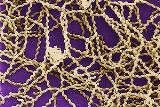
Leptospirosis
Overview
Infection
An infection is the colonization of a host organism by parasite species. Infecting parasites seek to use the host's resources to reproduce, often resulting in disease...
with bacteria of the genus
Genus
In biology, a genus is a low-level taxonomic rank used in the biological classification of living and fossil organisms, which is an example of definition by genus and differentia...
Leptospira
Leptospira
Leptospira is a genus of spirochaete bacteria, including a small number of pathogenic and saprophytic species...
, and affects human
Human
Humans are the only living species in the Homo genus...
s as well as other mammals, birds, amphibians, and reptiles.
The disease was first described by Adolf Weil in 1886 when he reported an "acute infectious disease with enlargement of spleen
Splenomegaly
Splenomegaly is an enlargement of the spleen. The spleen usually lies in the left upper quadrant of the human abdomen. It is one of the four cardinal signs of hypersplenism, some reduction in the number of circulating blood cells affecting granulocytes, erythrocytes or platelets in any...
, jaundice
Jaundice
Jaundice is a yellowish pigmentation of the skin, the conjunctival membranes over the sclerae , and other mucous membranes caused by hyperbilirubinemia . This hyperbilirubinemia subsequently causes increased levels of bilirubin in the extracellular fluid...
and nephritis
Nephritis
Nephritis is inflammation of the nephrons in the kidneys. The word "nephritis" was imported from Latin, which took it from Greek: νεφρίτιδα. The word comes from the Greek νεφρός - nephro- meaning "of the kidney" and -itis meaning "inflammation"....
". Leptospira was first observed in 1907 from a post mortem renal tissue
Kidney
The kidneys, organs with several functions, serve essential regulatory roles in most animals, including vertebrates and some invertebrates. They are essential in the urinary system and also serve homeostatic functions such as the regulation of electrolytes, maintenance of acid–base balance, and...
slice. In 1908, Inada and Ito first identified it as the causative organism and in 1916 noted its presence in rats.
Though recognised among the world's most common diseases transmitted to people from animals
Zoonosis
A zoonosis or zoonoseis any infectious disease that can be transmitted from non-human animals to humans or from humans to non-human animals . In a study of 1415 pathogens known to affect humans, 61% were zoonotic...
, leptospirosis is nonetheless a relatively rare bacterial infection in humans.
Unanswered Questions

